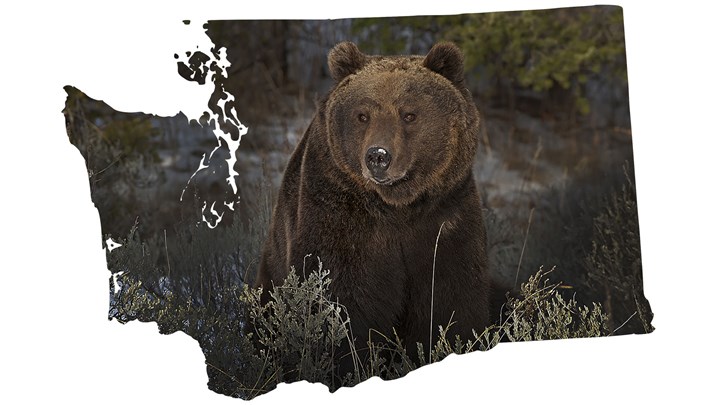
by Mark Chesnut - Monday, November 13, 2023

A U.S. Fish and Wildlife Service (USFWS) and National Park Service (NPS) plan to release grizzly bears in northern Washington state is drawing fire from area residents who believe release of the apex predators could negatively affect their farms and communities.
Under the draft plan, the government would release up to seven grizzlies in the North Cascades each year for five to 10 years, with a goal of establishing a population of about 25 bears. However, the plan is being widely criticized by area residents, and a public comment session held recently by the USFWS and NPS drew more than 200 people, with about 50 speaking out against the scheme and only six voicing their support for the releases.
One of the most vocal opponents is Republican U.S. Rep. Dan Newhouse from Washington. Last month, Newhouse introduced legislation that would force the Department of Interior to withdraw the proposed rule.
“Central Washingtonians have consistently voiced their concerns and opposition over the introduction of grizzly bears into the North Cascades Ecosystem, yet unelected bureaucrats from the National Park Service and the Fish and Wildlife Service continue to try to force these predators upon our communities,” Rep. Newhouse said in a statement released upon filing the measure. “These agencies should listen to the people who would be most impacted by these actions and immediately withdraw their proposed rule and draft an EIS statement [Environmental Impact Statement] so members of the region can rest safely knowing that an 800-pound apex predator is not going to enter into their backyard.”
Not surprisingly, Rep. Newhouse was among those attending the public comment session and speaking out strongly against the plan. And he’s not backing down one bit on his opposition to the releases.
“As a farmer, I worry not only about the bears destroying my crops, but for the safety and well-being of myself, my family and my own farmhands,” he told federal officials at the session. “It is clear you all know that grizzlies can and probably will move out of the zone in which you drop them in, yet rather than letting common sense prevail, you are continuing to push forward with this dangerous plan.”
One of Newhouse’s main bones of contention—and that of many others at the comment session—is the lack of a clear plan by the government to deal with bears that leave the release area and stray onto nearby farms, ranches and communities.
“So, tell me, what is the agency’s plan for dealing with crop loss and livestock depredation that is inevitable from the introduction of these predators?” he asked. “What is the timeline for issuing lethal permits? And how much will citizens have to lose before they can defend themselves from this predator in their back yard?”
A plan to release grizzlies in northern Washington has been in the works for several years, but the Trump administration killed the proposal since the species is not in danger of extinction. However, pressure from environmental extremist groups forced the Biden administration to reconsider the plan, resulting in the current proposal.
Grizzly bears historically inhabited the area where the releases are proposed, but none have been seen there in the past 25 years. Since the bears are listed as “threatened” nationally under the Endangered Species Act and “endangered” by the state, killing one to protect crops, livestock or for defense of self or family would elicit steep fines. In fact, according to the Washington Department of Fish and Wildlife, shooting a grizzly bear is both a federal and state felony that can result in criminal and civil penalties up to $56,000 and a year in jail.
For those northern Washington residents who might soon come face to face with a grizzly bear if the plan is implemented, it’s interesting to note that the NPS claims that pepper spray is more effective at stopping a bear attack than a firearm would be.
“Firearms are not recommended for stopping an attack,” the NPS website states. “Using a firearm during a bear attack may only worsen the attack. An injured bear will be more aggressive, especially during a fight. It’s also harder to hit a charging bear with a firearm rather than bear spray, and a firearm can be dangerous to any hiking partners. While firearms have been effective at stopping an attack, they aren’t recommended.”
About the Author
Freelance writer and editor Mark Chesnut is the owner/editorial director at Red Setter Communications LLC in Jenks, Okla. An avid hunter, shooter and field-trialer, he has been covering Second Amendment issues and politics on a near-daily basis for almost 25 years.
E-mail your comments/questions about this site to:
[email protected]
Proudly supported by The NRA Foundation and Friends of NRA fundraising.
